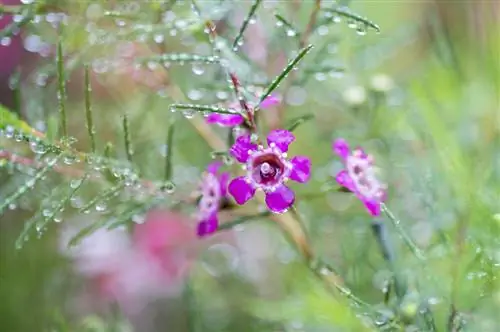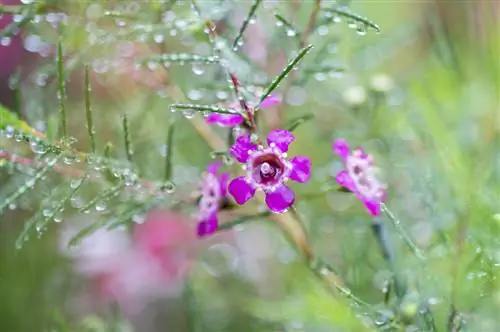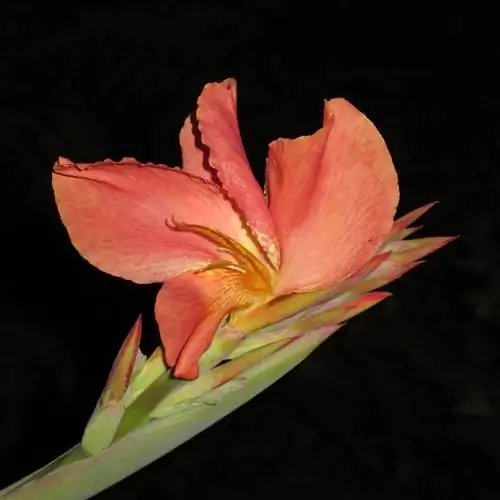- Author admin [email protected].
- Public 2023-12-16 16:46.
- Last modified 2025-01-23 11:21.
The so-called South Sea myrtle (Leptospermum scoparium) originally comes from Australia and New Zealand. There, the beautifully flowering shrub, which is native to mild climates, can reach heights of up to 4 m outdoors.

Is the South Sea myrtle hardy?
The South Sea myrtle is only partially hardy and can withstand temperatures of up to -5 degrees Celsius. Ensure optimal wintering in a bright room such as a cold house or a frost-free garage at temperatures between 0 and 10 degrees Celsius and sufficient humidity.
If there are cool night frosts, the South Sea myrtle has no chance outdoors
For a short time, the South Sea myrtle can withstand temperatures down to around minus 5 degrees Celsius, but if the outside temperatures are even cooler, it will definitely be dangerous for the delicate shrub. In Central Europe, this exotic plant is typically only cultivated outdoors as a pot plant during the summer. If it gets very cold in autumn, the South Sea myrtle should be moved to a protected winter quarters in good time. If a South Sea myrtle is to be repotted, the time before new growth in February and March is ideal. Please note that the South Sea myrtle has similar preferences when overwintering as many Mediterranean plants and should not be overwintered too warm.
Finding a winter quarters with optimal conditions for the South Sea myrtle
The South Sea myrtle is an evergreen plant, so it always needs winter quarters that are as bright as possible. Since growth is slow at this time of year, fertilizer and watering can be reduced accordingly. Overall, the following conditions should prevail in an optimal winter quarters for the indoor myrtle:
- bright, but not too much direct sun (in winter)
- sufficiently moist without waterlogging of the roots
- Temperatures between 0 and 10 degrees Celsius
The heated winter garden is usually too warm as a winter quarters for a South Sea myrtle, but cold houses or frost-free garages with sufficient daylight are ideal.
It's not just the winter cold that can be a problem
Plants that died over the winter are often classified as “frozen”, although completely different factors were sometimes responsible for the death of the plant. Similar to bamboo or the popular heather, it is not that rare that a South Sea myrtle does not freeze to death, but rather dries up. Therefore, always pay close attention to the correct moisture content in the pot of the South Sea myrtle. As a reward, you can expect the magnificent blossoming of the South Sea myrtle from February or March, which can last until June.
Tip
A mixture of rhododendron soil and quartz sand is the ideal substrate for setting the right water balance in the pot of the South Sea myrtle as easily as possible. This plant should also be watered with water that has as little lime as possible (e.g. rainwater).






